#walter alvarez
Text








No caption needed. 💙🤍
#hes such a sweetie#they all are#I will never get over it#leo messi#lautaro martinez#di maria#nicolas otamendi#de paul#julian alvarez#enzo fernandez#walter samuel#lionel scaloni#lisandro martinez#argentina nt#world cup champions#world cup 2022#world cup qatar 2022
400 notes
·
View notes
Note
If cammie went to college, what do you think the other girls (Anna, Tina, Mick etc) as well as Zach and Preston did after graduation?
OH BOY :DDDDDD!!!
this one is a long one good lord
Anna Fetterman
went into the field but for her civilian disguise, she's training to be a pilot.
She actually had to go through said training to keep up the disguise.
She does undercover work and honestly it's quite scary to realize Anna could've been on the same mission as some of her friends or coworkers as silent backup and they might not always spot her.
Married Carl (her boyfriend from book 1) and has two amazing daughters now
can and will surprise visit her friends just to keep them on their toes (she and Macey do coffee dates where they try out new cafes and chat)
Eva Alvarez
worked in the field for a few years in the FBI but after Kim Lee got seriously injured she left quickly
currently works a simple 9-5 office job and helps out in her community because even without being a super spy she can still help change the world
Kim Lee
did go to a community college to get an associate's degree in engineering and later continued to pursue a higher education in that field
even after her injury, Kim stayed in the field but soon moved into lab work making gadgetry and usually explosive prototypes. She did accidentally microwave one prototype and Eva put her on bed rest until she could correctly count the number of fingers Eva was holding up
Mick Morrison
went to college with Tina Walters as they had planned a long time ago
Got a degree in kinesiology and tried working in the field for a few years but she could never feel like it was really her place
When an opening for a new P&E assistant coach opened up Mick gave it a shot and found she really loved teaching
Sits beside Liz at the teachers table in the Grand Hall and they share gossip about their students
Courtney Bauer
worked for the CIA for quite some time. Stayed in the field as she found it was the place and path for her. Her civilian disguise was at first just a fresh out of high school young adult traveling the world to find herself. Now she's in a 'complicated business' that requires her to go overseas a lot but she fights tooth and nail to make it home for the holidays, big events, etc
she's usually late or the last to arrive and no one lets her live it down
(she was at least early to the reunion)
She, Eva, and Tina stayed close
those three idiots could never just fall apart even if they sometimes go weeks with zero communication
Tina W Walters
took some time after the fire to heal and breathe
went to college alongside Mick Morrison. Worked damn hard for that journalism degree and while she technically fulfilled her legacy as a third-generation gossip columnist, she's got a lot going on behind the scenes.
Worked for a short time in the field for the CIA like the rest of the Walters Women of the past
Changed to being a recruiter after mending her relationship with her mom and has nearly doubled the class count with how many girls she's adopted recruited
unknowingly became the next Buckingham for most of these girls and ya know Rachel it would've been nice to, you know, TELL HER SHE WAS ON THE DAMN PAYROLL
99.99% of her gossip papers are all about Macey, it's so damn funny
Macey helps by the way, they bond over it
there is an infamous page 10 Tina wrote one day that was more of a petty revenge thing than a 'lol taking shit about Macey for my job' thing
The much anticipated Preston freaking Winters
I'm not honestly sure
He spent a lot of time with his mom for sure, she didn't know anything after all and she just lost her husband. He wasn't going to let her lose her son too
did a lot of soul-searching but I'm not sure how much he stayed in politics. He might've honesty just stayed to keep in the loop about anything nefarious and found a way to contact his favorite girls
probably had to go underground with his mom for a while as the Circle scrambled after their leaders were gone (he is an heir technically)
I'd like to think he and Macey still talked but they didn't date for quite some time. They both needed to heal but they were there for each other. Who else could possibly understand them better than the other?
Zach Goode
from what I personally think along with the timeline of the books I do believe Zach went straight into the field while Cam did halfsies with school and work
did a lot of leg work with Bex since she also went straight into the field and while they were technically working for different agencies they're still a goofy little duo that know each other well enough to figure out where on earth they might be off to
attended some of Cammie's classes with her sometimes, mostly when he had downtime and wanted to just be with her or even take notes for her when she wasn't feeling too good
i refuse with all of my ass to believe he waited ten years to propose (sorry y'all but have you SEEN HIM)
if you guys wanna hear about any OCs do let me know because I will totally talk about the Background Girlstm
#asked and answered#gallagher girls#gallagher girls series#tina walters#cammie morgan#mick morrison#zach goode#bex baxter#anna fetterman#courtney bauer#eva alvarez#kim lee#preston winters#macey mchenry
17 notes
·
View notes
Text
Gallagher Girls and Their Food Crimes
Cammie: Eats popcorn without salt or butter
Bex: Made a steak out of A1 sauce and then made the actual steak into the sauce
Liz: Texas Pete's on eggs
Macey: Salad with no dressing if any sort
Tina: Ate a banana. Sideways. With the peel.
Eva: Eats cupcakes by licking off all the frosting and then eating the cake
Courtney: Worships Chick-fil-A sauce
Mick: Pickels. On pizza.
Kim Lee: Bites string cheese instead of tearing it
Anna: Melts cheese in a bowl and eats it with a spoon when she's too lazy to make actual food
Zach: Eats the weird bread with the seeds in it
Grant: Will and has eaten anything available (to be fair, the grilled cheese had been under the bed for only a few days)
Jonas: Eats the dark dark chocolate (the type that's probably used in interrogations)
Rachel: Self explanatory
Abby: Ate an entire baguette sideways
Matt: Dips his pizza in honey mustard
Joe: Dips his pizza in barbecue sauce
Townsend: Has no taste buds whatsoever
Catherine: Has an obsession with sour apple flavored candy
#gallagher girls#bex baxter#cameron morgan#macey mchenry#liz sutton#zachary goode#grant newman#catherine goode#joe solomon#Abby Cameron#edward townsend#jonas anderson#eva alvarez#kim lee#tina walters#courtney bauer#mick morrison#God help the chef
11 notes
·
View notes
Text
Alien Romulus
Story: Unter dem Kommando der vom Leben gezeichneten Rain und ihrem synthetischen Bruder Andy, macht sich eine kleine Gruppe von Schrottsammlern auf den Weg, die erst kürzlich aufgegebene Raumstation Romulus auszuschlachten. Bei ihrer Ankunft trifft die Crew lediglich auf ein synthetisches Wesen namens Rook, doch darüber hinaus scheint kein Mensch mehr an Bord zu sein, der sie beim Plündern…
#Action#Aileen Wu#Alex Garland#Alien#Archie Renaux#Benjamin Wallfisch#Biomechanik#Cailee Spaeny#Civil War#David Jonsson#Evil Dead#Facehugger#Fede Alvarez#Franchise#Galo Olivares#H.R.Giger#Horror#Ian Holm#Isabela Merced#Jerry Goldsmith#Kanon#Long Legs#Michael A. Pruss#Ridley Scott#Rodo Sayagues#Science-Fiction#Spike Fearn#Thriller#Twentieth Century Fox#Walter Hill
1 note
·
View note
Text
Reading Comprehension – The Film Version
I was talking to someone a while back about the grammar of film editing and how they'd like to know more, but info isn't really available. This is one of my soapboxes. It floors me how simple a lot of this shit is to explain, yet even top film schools just assign In the Blink of an Eye and call it a day. Walter Murch is a great writer, and he has the film cred to back up his treatise on aesthetics, but can we really not manage at least a couple more books anybody cares about? (No, On Film Editing and that book of interviews with Murch don't... cut it.)
For all that film has supposedly been democratized, Youtube et al. are a wasteland for actual discussions of film grammar. Every Frame a Painting has some stuff. Lindsay Ellis has a couple of videos. But most educational film content is very much aimed at either the technical side of camera and editing or is waaaaay too obsessed with the screenplay. (I await the whiny-ass anons from last time who insist that their favorite youtubers discuss this all the time. Nah, dude. If they did, you'd have been willing to name names.)
It's an approach that's overly literal and overly verbal, which makes sense given that what reading comprehension we're taught is all focused on picking apart some essay or maybe a classic book.
Unfortunately, words aren't what define film: reaction shots are.
Having a command of film grammar matters for everything from detecting political propaganda to recognizing when Hollywood is like "Ohhh, but we gave them liiiines in the scriiipt" but the actual product they put out completely undercuts those characters, whether it's not even filming a single or stuffing them behind other characters in the group shots or being embarrassingly incapable of lighting dark skin properly or a host of other obnoxious shit.
Anyway, I made a couple of my own little attempts to put out some free educational materials about how film grammar works.
Carlos "Cougar" Alvarez: Human Exclamation Point is about how to make a character feel like a lead when they have no lines and like two seconds of screen time.
Aisha is the Object; Clay is the Subject is about how to make someone not a protagonist by training the camera on their butt all the damn time.
IDK why I was suddenly thinking about this this afternoon, but I was.
213 notes
·
View notes
Text
MEET MY OCS (pjo)

name: andromeda 'andy' mendoza
love interest: jake mason
godly parent: hecate
powers: mystiokinesis, mist control, umbrakinesis
status: dead
faceclaim: olivia rodrigo

name: blake newton
love interest: reyna ramirez arellano, vera alvarez (oc)
godly parent: hephaestus
powers: mechanics, technokinesis
faceclaim: erana james

name: lydia king
love interest: zoë nightshade, connor stoll
godly parent: apollo
powers: precognition, archery, vitakinesis
faceclaim: lilia buckingham

name: ezra finley
love interest: jason grace
godly parent: demeter
powers: chlorokinesis, geokinesis
faceclaim: william franklyn-miller

name: millie spencer
love interest:
godly parent: hades
affiliation: hunters of artemis
powers: necromancy, phobikinesis, umbrakinesis - eternal youth, archery, enhanced physical prowess, zoolingualism
faceclaim: malina weissman

name: christopher 'kit' andrews
love interest: milo river (oc)
godly parent: ares
powers: telumkinesis, enhanced physical prowess, enhanced war strategies, fighting skills
faceclaim: caleb mclaughlin

name: milo river
love interest: kit andrews (oc)
godly parent: aphrodite
powers: amokinesis, charm speak, french fluency
faceclaim: maxwells acee donovan

name: marnie dianna lincoln
love interest: piper mclean
godly parent: hebe
powers:
faceclaim: ella purnell

name: damon vaughn
love interest: travis stoll
godly parent: dionysus
powers: chlorokinesis, ability to cure + cause madness
faceclaim: joe keery

name: cassandra 'cassie' diaz
love interest:
godly parent: hermes
powers: enhanced speed, audiokinesis, enhanced theft abilities
faceclaim: xochitl gomez

name: evan reeves
love interest:
godly parent: hypnos
powers: hypokinesis
faceclaim: noah jupe

name: nina walters
love interest:
godly parent: nemesis
powers: control over body\spiritual balance, can curse someone with bad luck
faceclaim: sadie sink

name: nicholas larson
love interest: leo valdez
godly parent: nike
powers: enhanced physical prowess, can manifest golden wings on back, ability to use any weapon, can curse someone to lose
faceclaim: louis partridge

name: vera alvarez
love interest: blake newton (oc)
godly parent: tyche
powers: luck manipulation, natural gambler
faceclaim: isabela merced

name: livia zhou
love interest: luke castellan, helios
godly parent: hera
powers:
faceclaim: lola tung
#original character#faceclaim#percy jackson oc#percy jackson#hecate cabin#hephaestus cabin#apollo cabin#demeter cabin#hades cabin#hunters of artemis#ares cabin#aphrodite cabin#hebe cabin#dionysus cabin#hermes cabin#hypnos cabin#nemesis cabin#nike cabin#tyche cabin#hera cabin#camp half blood
40 notes
·
View notes
Text
Found an Self-Insert Cyberpunk fanfic.
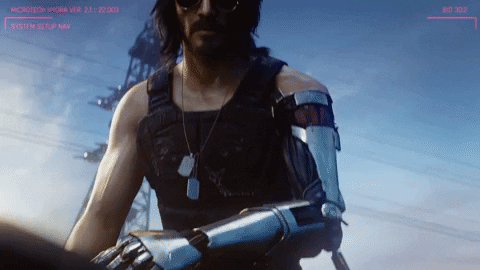
Except it's not the usual type. It's the type where it's told entirely from the perspective of people other than the SI, which makes it more interesting.
Problem 1: Current events.
Almost all the references people make are ones you'd expect from someone today, like Batman or other pieces of pop culture.

Cyberpunk 2077 often references fictional in-universe media. Like the dead rock star stuck in V's head. In a world where everything and everyone is disposable and temporary, why would people usually reference 80 year old media?
At one point, a character explicitly compares another character's clothing to Danny DeVito in Matilda.
Okay, the CP timeline divergences mainly started in the 90s. So it's possible that the movie was still made, but it's still odd. Especially when the same characters don't recognize that the story's lead is heavily based on Walter White. Shaved head and everything.
Except he's using his chemistry potential for good, not evil.
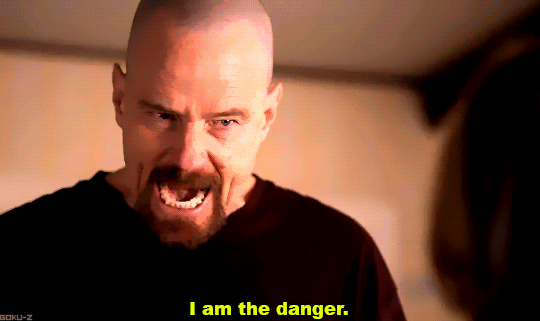
And it's not just media. It's also Current Year memes, like V describing certain people as a "corpo bros who watched too much American Psycho", or himself as a "disaster bisexual".
Oh look, a segue.
Problem 2: Rainbow connection.
The story puts a lot of emphasis on LGBT characters.
There's Judy Alvarez, obviously. But also, V's in with Meredith Stout is Stout's explicitly non-binary ex who, you guessed it, is they/them.
Adds nothing to the story. The SI provides that info, and Meredith tries to trip V up, but he sees through it.
Since Meredith is a Militech Corpo, and V is an Arasaka ex-Corpo (who still isn't over it), why doesn't V…just use that connection, somehow? Militech and Arasaka are rivals. There could be some friction there. Or V could sympathize with how Stout would do anything to keep her job.
Why are non-binary characters always just they/them? Why not he/she/they? He/She? Xi/xir? or Lunagender? Or using regular He or She interchangably while IDing as enby? Why is it always the basic, simple, "normal" version? Got a Rochester's Wife situation going on?*
Also, in fanfics, things like this often suggest even more awkward left-wing political insertions, down the line.
Problem 3: even more awkward left-wing political insertions.
Well, just one.
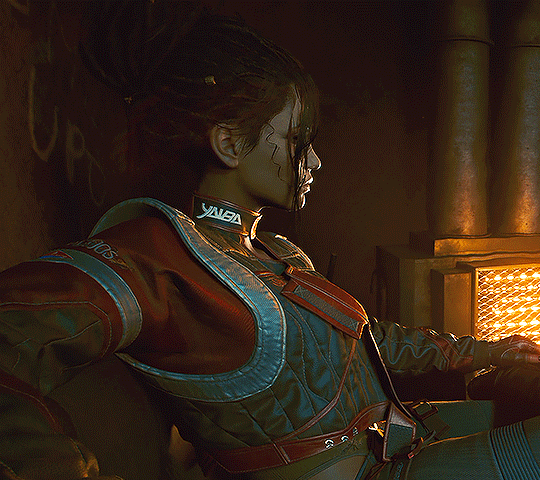
Panam Palmer just didn't fit. This wasn't rare in Night City. Lots of people who didn't fit in, were awkward, had no social groups, didn't choose to be loners. She expected to be alone in the city and no one cared. But it was personal hate. Her skin color, nomad markings, speech, just being a woman. The list went on and every day there was some new jerk who needed to find out, because they messed around.

Panam is canonically native American, according to the devs, but she looks like a random white biker lady wth a tan. Wouldn't be the first white-passing Native woman I've seen.
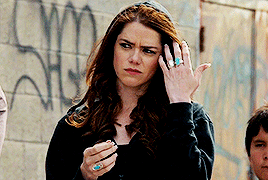
Also, she lives and works around Night City. Which is extremely diverse.
Judy Alvarez and Jackie (both Hispanic) were both POV characters, and race wasn't really mentioned. You'd think ex-Arasaka V or someone would mention Arasaka's racism, but nope. River Ward was a viewpoint character, and he's much more visibly non-white, down to his necklace and dreamcatcher (if romanced).
He only brings it up in the fic when Misty asks him if he ever had his fortune told. Apparently his granny did a "spirit walk" when him and his sister were born.**
I've seen playthroughs of the game, and I don't remember sexism really being a thing. Why would skin color matter much when anyone can change that and other ethnic features at will?
Why did race only come up as a significant thing now?
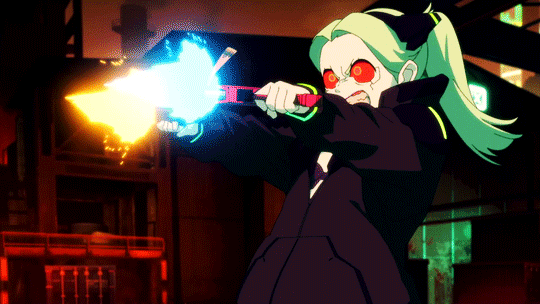
I'd expect Panam to get the most stick for being a Nomad, not brown, or a woman. Especially in a city where any woman could sprout mantis blades and go Cyberpsycho at the drop of a hat.

This feels…reductive. Like the writer wanted to give Panam challeges to overcome so she could be a Tough Woman™, and just…piled too much on, like a Chicago hot dog.

I would've gone with something more subtle. "Her back itches without her Nomad tribe behind her, and she's uncomfortable in a city instead of a desert, or a road. Even the echoes sound wrong."
So, yeah, this was the last straw.
Also, I checked the writer's profile, and, very stereotypically, she's from Portland.
*Also, you might recall that there was a nontroversy over an soda ad in the game featuring a lady with, ahem, a rather substantial bulge. Based on an actual trans woman. Somehow, portraying a (possible) trans woman in the same sexually objectified way as ads featuring non-trans people is transphobic.
I never worked out that logic.
My best guess is that some people were uncomfy with it, and it's about a trans person, so it's must be *phobic somehow.
Wouldn't it be ironic if the ad was just Photoshop in universe? Or the in-universe model was a non-trans woman who strapped on the junk just for the ad?
(Though depending on who you ask, that still counts as being a trans woman, somehow.)
**Come to think, that kind of feels like it's stereotyping. I can't find evidence Pomo Native Americans do spirit walks, but maybe my Google-fu is just weak.
19 notes
·
View notes
Text
NEWS ON THE TEAM:
• Dibu podría ir al Banco, Scaloni quiere probar a Walter Benitez 🧤 | Emi Martinez could start from the bench, Scaloni wants to test Walter Benitez to see if he’s fit for Copa America.
• Julian Alvarez y Mac Allister posibles TITULARES | Julian and Alexis are likely to start.
• Scaloni probó a Garnacho y Bounanotte como titulares | Scaloni trained with team with Garnacho and Bounnanotte as starters.
Costa Rica es un equipo que tiene un poco mas de nivel que El Salvador, todo puede pasar.
22 notes
·
View notes
Text


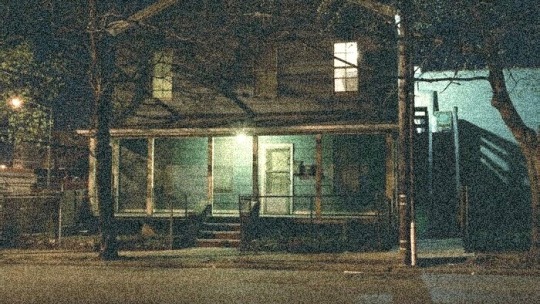




Chalk Mountain
+ a WiP introduction
(status: third draft)
genre(s): fantasy, action, au
tone(s): regional gothic, found family, prophesies, platonic love, lgbt+ protag, "magic" abilities
warning(s): blood, harsh family relations, death, cursing -- (will be editing to add more as i come across them)
tag: #wip: chalk mountain
"stay away from the bluebonnets," dixie's mother always said. "they know your secrets and will trick you with good smelling petals and a comfortable place to rest after a picnic; but eventually you will never get up, eventually you will be blue, floral, swaying in the hot wind, watching as people pass by until another sleepy bystander succumbs to take their last nap as the person they were. before they take them. before they take you."
(will be adding links to characters and more characters and some other stuff when they are ready; this will be reblogged when updated with anything. authors notes at the end!)
characters and descriptions! (to be edited)
Dixie Alvarez is the protagonist of this story. A heroine against her will, Dixie has a smart mouth and a bad habit of holding grudges; she never fit in anywhere and always managed to piss somebody off no matter where she was. A difficult relationship with her father and her mothers abandonment drives her to flee her home in search of a new, quiet, and peaceful life with people like her. Outcasts. So, she set off in her trashy green minivan to a town her mother used to tell her about in stories. Chalk Mountain. Curly, mid-length red hair, downturned brown eyes, freckles, (mostly) untamed eyebrows, 5'7". Evolved (unknown)
Emilio Baku is the side character, Dixie's best friend, and partner in crime. Ripped away from his home in Korea, Emilio developed a big heart that was always open to others after his adoptive parents took him in like it was nothing; he has now been in Chalk Mountain since he was 5 years old. Lovable teddy bear meets ruthless suppressed anger makes a man willing to do anything to protect what he loves. Short black hair that's always a little messy, deep dark brown eyes, faded burn scars cover his hands. 6'2". Evolved
Franklin and Maude are Emilio's adoptive parents and Dixie's guardians. Maude has been in Chalk Mountain since she was born. Her mother was a jailer before the town went bankrupt after a false meteorite claim that drained their tourism. Franklin came later, after he was found out as an Evolved and began to be hunted down. He took refuge in Chalk mountain 27 years ago and soon after met Maude. Maude: long, straight, gray hair, white eyes, smile lines, eye wrinkles, 7'6". Franklin: long gray hair, tall and slender figure, milky white eyes. 7'6". Both Evolved.
extra characters + descriptions (to be expanded)
The Oracle -> eons old but presents as around 30s/40s. vitiligo, blind with white irises, waist length wavy hair as black as the night sky, various markings and tattoos and scars. can only speak in prophet but can communicate in your dreams.
Marigold Alvarez -> Dixie's mother, very, very, VERY powerful woman. A force to be reckoned with, legends about her, and large popularity around Chalk Mountain. Marigold has been missing for over 11 years now, but Dixie hasn't seen her since before she herself was 12 years old. Short red bob, green eyes, freckles, permanent smirk on her face with smile lines. 5'9". Last known location: Chalk Mountain.
Walter Alvarez -> Dixie's father, loud, overbearing. One night after a screaming fight that Dixie overheard, her mother left in a tizzy. She watched her mom speed off in the car from her bedroom window, never to be seen or heard of again. Walter makes a point to never speak of Marigold and has tried painting her to be the villain ever since. Salt and pepper, short, gelled, curly hair, 5'8". Husky figure, brown eyes, grungy teeth.
authors note >
so excited to finally get this ball rolling and start sharing it with you as i figure my way through this story. i will eventually be sharing drafts as i get them written and will do snippets, short stories, moodboards, etc. based on this wip! i will announce when tag list is open (not enough content for me to want to make one yet) but for now enjoy this little info dump on my world i'm building:) also this story will be written with "proper" capital letters, i just enjoy making content lowercase! open to asks and tag games about this wip!!
this will be giving very much "mutants from x-men", very "don't trust anything beautiful". also there's dragons.
#i did this all on mobile so i hope it doesn't look insane#y'all are gonna think my magic building is fucking insane LMFAO#wip: chalk mountain#wip intro#wip introduction#my wip#writeblr#currently writing#writing#authors#i have loved queue since we were 18#writers on tumblr#literature#regional gothic#texas gothic#lgbt protag#found family#fantasy#currently reading
54 notes
·
View notes
Text

this is the comet Shoemaker-Levy 9, photographed by the Hubble Space Telescope.
when you think of a comet, you probably think of something more similar to the emoji shape: ☄️. but this comet broke into many different pieces, pulled apart by Jupiter’s gravity when it passed close by.
on June 21, 1978, Walter and Luis Alvarez, together with Frank Asaro, discovered iridium in a clay deposit from about 65 million years ago, or around the time that the dinosaurs went extinct. the iridium that they found was over 300 times the normal amount present in earth’s soil. around the world, they found that very high iridium levels were consistently present in samples from that time period.
so, how did it get there? eventually, the Alvarezes decided it must have been the result of a comet or asteroid striking the earth.
at the time, the prevailing theory was that the dinosaurs had gradually gone extinct over millions of years. but they disappeared very suddenly from the fossil record, not gradually. a catastrophic event could have wiped them out entirely.
over time, the Alvarez theory gained support, and one of the things that helped to prove it was Shoemaker-Levy 9. named after the astronomers who discovered it, the comet was headed for Jupiter, and it would be the first time humans could witness an event like this, thanks to the Hubble Space Telescope.
many people expected the comet to have little, if any, impact on Jupiter. it was not one solid object, but 21 separate fragments, and Jupiter is enormous. but on July 16, 1994, the first fragments of the comet struck Jupiter, and one of them released seventy-five times more force than all the nuclear weapons in existence at the time. the fragment was roughly the size of a small mountain, but tore holes into Jupiter the size of the Earth.

here, you can see debris clouds from the comet impacts on Jupiter.
and that’s why I love this comet! it’s such a good example of two branches of science that you wouldn’t think to connect (astronomy and paleontology) coming together.
photos from NASA’s APOD archive via the Hubble Space Telescope. information from the APOD archive and A Short History of Nearly Everything by Bill Bryson.
9 notes
·
View notes
Text
Cataloging how many characters in the fandoms I’m in have the same names and what those names are:
5 Alexs (Fierro, Walter, Gutierrez, Mercer and Claremont-Diaz)
3 Amys (Fleming, Farrah-Fowler and Santiago)
3 Antonios (Madrigal, the principal from Violetta (may he rest in peace) and Gutierrez from Bia)
2 Barbaras (Gordon and Handler(?))
2 Bens (Hanscom and the prince)
2 Bruces (Banner and Wayne)
2 Brunos (Madrigal and that one guy from SL)
2 Cerises (Hood and the one from miraculous (or did she change her name again?))
3 Charlies (Spring from Heartstopper, from the perks of being wallflower and Beckendorf from pjo)
2 Coles (Mackenzie and Walter)
2 Connors (Kent and Stoll)
2 Dianas (Prince and Barry)
2 Eddies (Munson and Kaspbrak)
2 Felixs (Madrigal and Fathom)
2 Glorias (Pritchett and the one from the Barbie movie)
2 Harleys (Keener and Quinn)
4 Heathers (the three from heathers and the lifeguard in stranger things)
2 Hunters (Huntsman and Deamonne-Noceda)
2 Jackies (Howard and the dance teacher from Violetta)
3 Jasons (Farley-Shaw, Grace and Todd)
2 Lukes (Castellan and Patterson)
2 Magnus (Chase and Nielsen)
Mallory (Keen and the one from bsc)
2 Marthas (Nielsen and Wayne)
2 Maxs (Kante and Mayfield)
3 Michaels (Hanlon, Holden and Wheeler)
2 Nanas (Noodleman and Shimura)
2 Nicks (Nelson and Wilde)
3 Peters (Parker (if you count all the Peter Parkers as one), Pan and Quill)
2 Rachels (Dare and Roth)
2 Rileys (Matthews from girl meets world and the girl from inside out)
2 Robins (Buckley and Scherbatsky)
3 Sams (Wilson, Al-Abbas and from perks of being wallflower)
2 Simons (Alvarez and Eriksson, the kings who inspired this post)
4 Stans (the two from gravity falls, Barber and Uris)
Tori (Spring and Vega)
2 Wills (Solace and Walter)
#I made a notebook for all the fictional characters I knew during senior year#not tagging this so I don’t have 15 different fandoms on my ass
8 notes
·
View notes
Text
[Lays down like a French woman][SXF infomercial music]
hi, have you ever wondered what on god's green earth would happen if you got Cammie's whole class line up? Have you ever wanted to see what the girls look like (from my perspective at least)? Well you're in luck!
Here on the nonsense and spelling mistakes blog run by the tears of Edward Townsend (yeah his name is freaking Edward) we so happen to provide fanart for the Gallagher Girls series.
That's right.
Fanart
For
Gallagher Girls
And I consistent with it? Hell no :D
Is most of my work AUs and Tina Walters? Abso-tooda-lutely
I present to you a mildly old ish line up of Cammie's Sophomore class (ignore any mistakes, I have no control over me)






If you see any faces you don't recognize or names you don't know congrats. Those are the mystery background girls that never get a name but are in the class count anyway.
#gallagher girls#gallagher girls series#fanart#cammie morgan#macey mchenry#myart#eva alvarez#rebecca baxter#bex baxter#courtney bauer#kira arancel#Esperanza de la Cruz#anna fetterman#Katie Flinn#Caoimhe Greene#kim lee#Hilary Morgan#mick morrison#liz sutton#tina walters#nova wren#deafmick#transmick
19 notes
·
View notes
Text
Why Robert Oppenheimer's Atomic Bomb Still Haunts Us
— By Richard Rhodes | Published May 15, 2013
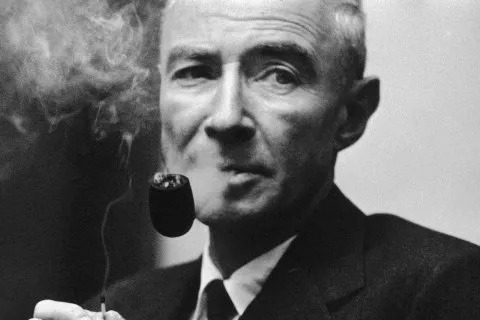
Oppenheimer spearheaded the creation of the atom bomb. René Burri/Magnum
Robert Oppenheimer oversaw the design and construction of the first atomic bombs. The American theoretical physicist wasn't the only one involved—more than 130,000 people contributed their skills to the World War II Manhattan Project, from construction workers to explosives experts to Soviet spies—but his name survives uniquely in popular memory as the names of the other participants fade. British philosopher Ray Monk's lengthy new biography of the man is only the most recent of several to appear, and Oppenheimer wins significant assessment in every history of the Manhattan Project, including my own. Why this one man should have come to stand for the whole huge business, then, is the essential question any biographer must answer.
It's not as if the bomb program were bereft of men of distinction. Gen. Leslie Groves built the Pentagon and thousands of other U.S. military installations before leading the entire Manhattan Project to success in record time. Hans Bethe discovered the sequence of thermonuclear reactions that fire the stars. Leo Szilard and Enrico Fermi invented the nuclear reactor. John von Neumann conceived the stored-program digital computer. Edward Teller and Stanislaw Ulam co-invented the hydrogen bomb. Luis Alvarez devised a whole new technology for detonating explosives to make the Fat Man bomb work, and later, with his son, Walter, proved that an Earth-impacting asteroid killed off the dinosaurs. The list goes on. What was so special about Oppenheimer?
He was brilliant, rich, handsome, charismatic. Women adored him. As a young professor at Berkeley and Caltech in the 1930s, he broke the European monopoly on theoretical physics, contributing significantly to making America a physics powerhouse that continues to win a freight of Nobel Prizes. Despite never having directed any organization before, he led the Los Alamos bomb laboratory with such skill that even his worst enemy, Edward Teller, told me once that Oppenheimer was the best lab director he'd ever known. After the war he led the group of scientists who guided American nuclear policy, the General Advisory Committee to the U.S. Atomic Energy Commission (AEC). He finished out his life as director of the prestigious Institute for Advanced Study in Princeton, New Jersey, where he welcomed young scientists and scholars into that traditionally aloof club.

August 9, 1945: Nagasaki is hit by an atom bomb. Nagasaki Atomic Bomb Museum/EPA
Those were exceptional achievements, but they don't by themselves explain his unique place in nuclear history. For that, add in the dark side. His brilliance came with a casual cruelty, born certainly of insecurity, which lashed out with invective against anyone who said anything he considered stupid; even the brilliant Bethe wasn't exempt. His relationships with the significant women in his life were destructive: his first deep love, Jean Tatlock, the daughter of a Berkeley professor, was a suicide; his wife, Kitty, a lifelong alcoholic. His daughter committed suicide; his son continues to live an isolated life.
His Choices or Mistakes, Combined with his Penchant for Humiliating Lesser Men, Eventually Destroyed Him.
Oppenheimer's achievements as a theoretical physicist never reached the level his brilliance seemed to promise; the reason, his student and later Nobel laureate Julian Schwinger judged, was that he "very much insisted on displaying that he was on top of everything"—a polite way of saying Oppenheimer was glib. The physicist Isidor Rabi, a Nobel laureate colleague whom Oppenheimer deeply respected, thought he attributed too much mystery to the workings of nature. Monk notes his curiously uncritical respect for the received wisdom of his field.
Monk's discussion of Oppenheimer's work in physics is one of his book's great contributions to the saga, an area of the man's life that previous biographies have neglected. In the late 1920s Oppenheimer first worked out the physics of what came to be called black holes, those collapsing giant stars that pull even light in behind them as they shrink to solar-system or even planetary size. Some have speculated Oppenheimer might have won a Nobel for that work had he lived to see the first black hole identified in 1971.
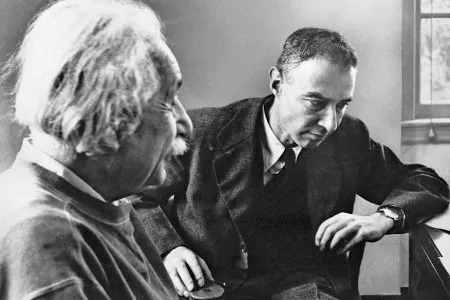
Oppenheimer with Albert Einstein, circa the 1940s. Corbis
Oppenheimer's patriotism should have been evident to even the most obtuse government critic. He gave up his beloved physics, after all, not to mention any vestige of personal privacy, to help make his country invulnerable with atomic bombs. Yet he risked his work and reputation by dabbling in left-wing and communist politics before the war and lying to security officers during the war about a solicitation to espionage he received. His choices or mistakes, combined with his penchant for humiliating lesser men, eventually destroyed him.
One of those lesser men, a vicious piece of work named Lewis Strauss, a former shoe salesman turned Wall Street financier and physicist manqué, was the vehicle of Oppenheimer's destruction. When President Eisenhower appointed Strauss to the chairmanship of the AEC in the summer of 1953, Strauss pieced together a case against Oppenheimer. He was still splenetic from an extended Oppenheimer drubbing delivered during a congressional hearing all the way back in 1948, and he believed the physicist was a Soviet spy.
Strauss proceeded to revoke Oppenheimer's security clearance, effectively shutting him out of government. Oppenheimer could have accepted his fate and returned to an academic life filled with honors; he was due to be dropped as an AEC consultant anyway. He chose instead to fight the charges. Strauss found a brutal prosecuting attorney to question the scientist, bugged his communications with his attorney, and stalled giving the attorney the clearances he needed to vet the charges. The transcript of the hearing In the Matter of J. Robert Oppenheimer is one of the great, dark documents of the early atomic age, almost Shakespearean in its craven parade of hostile witnesses through the government star chamber, with the victim himself, catatonic with shame, sunken on a couch incessantly smoking the cigarettes that would kill him with throat cancer at 63 in 1967.
Rabi was one of the few witnesses who stood up for his friend, finally challenging the hearing board in exasperation, "We have an A-bomb and a whole series of it [because of Oppenheimer's work], and what more do you want, mermaids?" What Strauss and others, particularly Edward Teller, wanted was Oppenheimer's head on a platter, and they got it. The public humiliation, which he called "my train wreck," destroyed him. Those who knew him best have told me sadly that he was never the same again.
For Monk as for Rabi, Oppenheimer's central problem was his hollow core, his false sense of self, which Rabi with characteristic wit framed as an inability to decide whether he wanted to be president of the Knights of Columbus or B'nai B'rith. The German Jews who were Oppenheimer's 19th-century forebears had worked hard at assimilation—that is, at denying their religious heritage. Oppenheimer's parents submerged that heritage further in New York's ethical-culture movement that salvaged the humanism of Judaism while scrapping the supernatural overburden. Oppenheimer, actor that he was, could fit himself to almost any role, but turned either abject or imperious when threatened. He was a great lab director at Los Alamos because of his intelligence—"He was much smarter than the rest of us," Bethe told me—because of his broad knowledge and culture; because of his psychological insight into the complicated personalities of the gifted men assembled there to work on the bomb; most of all because he decided to play that role, as a patriotic citizen, and played it superbly.
Monk is a levelheaded and congenial guide to Oppenheimer's life, his biography certainly the best that has yet come along. But he devotes far too many pages to Oppenheimer's Depression-era flirtation with communism, a dead letter long ago and one that speaks more of a rich esthete's awakening to the suffering in the world than to Oppenheimer's political convictions. He doesn't always get the science right. Most of the errors are trivial, but a few are important to the story.
Their Fundamental Objection Was to Giving up Production of Real Weapons so That Teller Could Pursue His Pipe Dream, a Dead-end Hydrogen Bomb Design.
A fundamental reason Oppenheimer opposed a crash program to develop the hydrogen bomb in response to the first Soviet atomic-bomb test in 1949 was the requirement of Edward Teller's "Super" design for large amounts of a rare isotope of hydrogen, tritium. Tritium is bred by irradiating lithium in a nuclear reactor, but the slugs of lithium take up space that would otherwise be devoted to breeding plutonium. To make tritium for a hydrogen bomb that the U.S. did not know how to build would have required sacrificing most of the U.S. production of plutonium for devastating atomic bombs the U.S. did know how to build. To Oppenheimer and the other scientists on the GAC, such an irresponsible substitution as an answer to the Soviet bomb made no strategic sense. It's true that the hydrogen bomb with its potentially unlimited scale of destruction made no military sense to them either—and was morally repugnant to some of them as well. But their fundamental objection, which Monk overlooks, was to giving up production of real weapons so that Teller could pursue his pipe dream, a dead-end hydrogen bomb design that never worked.

Julius Robert Oppenheimer (April 22, 1904 – February 18, 1967)
More egregious is Monk's notion that the Danish physicist Niels Bohr, Oppenheimer's mentor during the war on the international implications of the new technology, pushed for the bomb's use on Japan to make its terror manifest. He did not. He pushed, to the contrary, for the Allies, the Soviet Union included, to discuss the implications of the bomb prior to its use and to devise a framework for controlling it. Bohr foresaw that the bomb would stalemate major war, as it has, but correctly feared that U.S. secrecy about its development would lead to a U.S.-Soviet arms race. He conferred with both Roosevelt and Churchill about presenting the fact of the bomb to the Russians as a common danger to the world, like a new epidemic disease, that needed to be quarantined by common agreement. Churchill vehemently disagreed, and Roosevelt was old and ill. The moment passed. The arms race followed, as Bohr foresaw, and with diminished force, among pariah states like Iran and North Korea, continues to this day.
Monk's Oppenheimer is a less appealing figure than the Oppenheimer of previous biographies, perhaps because, as an Englishman, Monk is less susceptible to Oppenheimer's rhetorical gifts and more candid about calling out his evasions. He pulls together most of what several generations of Oppenheimer scholars have found and offers new revelations as well. Yet there's a faint whiff of condescension in his portrait, and the real Oppenheimer, the man whom so many loved and admired, still somehow escapes him. He misses the deep alignment of Robert Oppenheimer's life with Greek tragedy, the charismatic hubris that was his glory but also the flaw that brought him low. But maybe I'm expecting too much: maybe only a large work of fiction could assemble that critical mass.
#Robert Oppenheimer#Atomic Bomb#Richard Rhodes#World War II#Manhattan Project#Ray Monk#Gen. Leslie Groves#Pentagon#Hydrogen Bomb#Edward Teller | Stanislaw Ulam#Nobel Prize#Princeton University#Albert Einstein#President Eisenhower#Lewis Strauss#Hydrogen | Tritium | Plutonium#Roosevelt | Churchill#US — Soviet Union
17 notes
·
View notes
Text
Books of 2023
"You Look Like a Thing and I Love You" by Janelle Shane - AI is even weirder when you know how it works. Interesting read. Recommended.
"The Spare Man" by Mary Robinette Kowal - Cozy mystery, IN SPACE! Good mystery, fun characters, ACAB. Recommended.
"Grandmaster of Demonic Cultivation, Vol. 4" by Mo Xiang Tong Xiu - Oh they FUCKIN. Recommended.
"Meddling Kids" by Edgar Cantero - Scooby-Doo meets Lovecraft. Scarier than I expected. Recommended.
"Kingdom Hearts: 358/2 Days" vols. 1-5 by Shiro Amano - Break my heart all over again why don't you. Surprisingly humorous. Recommended.
"Every Heart a Doorway" by Seanan McGuire - Boarding school/group therapy for young adults who have just returned from portal fantasies. "Piranesi" vibes. Recommended.
"Down Among the Sticks and Bones" by Seanan McGuire - Prequel "A" to 'Every Heart a Doorway.' Vampires, mad scientists, and the greatest horror: suburbia. Recommended.
"Beneath the Sugar Sky" by Seanan McGuire - Sequel "A" to 'Every Heart a Doorway.' A group of portal-fantasy survivors quest to resurrect a friend. Recommended.
"In an Absent Dream" by Seanan McGuire - Prequel "B" to 'Every Heart a Doorway.' Fae bargains and the consequences of brinksmanship. Recommended.
"Peter Pan" by James Barry - Charmingly written, alarming subtext. At times appallingly racist. An interesting read.
"Come Tumbling Down" by Seanan McGuire - Sequel "B" to 'Every Heart a Doorway.' A portal-fantasy survivor seeks aid to unswap her body. Recommended.
"The Roman Empire" by Don Nardo - Nice overview of the time period, accessible, with good references. At times gratingly Christianity-positive.
"Your Guide to Not Getting Murdered in a Quaint English Village" by Maureen Johnson and Jay Cooper - What it says on the tin. Amusing.
"Across the Green Grass Fields" by Seanan McGuire - Prequel "C" to 'Every Heart a Doorway.' Horse girl goes to horse world. Frankly, missable.
"Everyday Life in Ancient Rome" by Lionel Casson - Fascinating, and has my favorite quality in a historian: petty snark. Recommended.
"Where the Drowned Girls Go" by Seanan McGuire - Sequel "C" to 'Every Heart a Doorway.' Portal Fantasy survivor escapes institutionalization. Recommended.
"T. Rex and the Crater of Doom" by Walter Alvarez - How we figured out what killed the dinosaurs. Recommended.
"Autobiography of a Transgender Scientist" by Ben Barres - Life, science, and activism from a trans neuroscientist. Recommended if you like neuro jargon.
"The Eternal Darkness" by Robert Ballard - A brief history of deep-sea exploration told by someone who's been there. Recommended.
"Lost in the Moment and Found" by Seanan McGuire - Prequel "D" to 'Every Heart a Doorway.' Abused child escapes to a cosmic Lost & Found. Recommended.
"The Writing in the Stone" by Irving Finkel - A mysterious stone drives a Babylonian exorcist to a killing spree. Cool concept, unpleasant execution.
"The Pillars of the Earth" by Ken Follett - Docu-drama about the building of a cathedral. Like if Game of Thrones loved its characters. Recommended.
"The Secret History of Moscow" by Ekaterina Sedia - People are turning into birds and folktale creatures live underground. Not my cup of tea, but Gaiman fans will like it.
"Wild" by Cheryl Strayed - A woman hikes the Pacific Crest Trail alone to grieve her mother's death. An interesting read.
"House of Leaves" by Mark Z. Danielewski - An imaginary film ruins a guy's life. Disturbing. Recommended.
"The Devil in the White City" by Erik Larson - The true story of the 1893 World's Fair and the serial killer who hunted there. Fair bits way more interesting than killer bits. Recommended.
"Piranesi" by Susanna Clark (reread) - The Beauty of the House is immeasurable; its Kindness infinite. Recommended.
17 notes
·
View notes
Video
youtube
Alien: Romulus | Official Trailer 2 - Red Band & Images
The sci-fi/horror-thriller takes the phenomenally successful “Alien” franchise back to its roots: While scavenging the deep ends of a derelict space station, a group of young space colonizers come face to face with the most terrifying life form in the universe.

(L-R): Archie Renaux as Tyler and Cailee Spaeny as Rain Carradine in 20th Century Studios' ALIEN: ROMULUS. Photo courtesy of 20th Century Studios. © 2024 20th Century Studios. All Rights Reserved.
The film stars Cailee Spaeny (“Priscilla”), David Jonsson (“Agatha Christie’s Murder is Easy”), Archie Renaux (“Shadow and Bone”), Isabela Merced (“The Last of Us”), Spike Fearn (“Aftersun”), Aileen Wu.

Cailee Spaeny as Rain Carradine in 20th Century Studios' ALIEN: ROMULUS. Photo courtesy of 20th Century Studios. © 2024 20th Century Studios. All Rights Reserved.
Fede Alvarez (“Evil Dead,” “Don’t Breathe”) directs from a screenplay he wrote with frequent collaborator Rodo Sayagues (“Don’t Breathe 2”) based on characters created by Dan O’Bannon and Ronald Shusett. “Alien: Romulus” is produced by Ridley Scott (“Napoleon”), who directed the original “Alien” and produced and directed the series’ entries “Prometheus” and “Alien: Covenant,” Michael Pruss (“Boston Strangler”), and Walter Hill (“Alien”), with Fede Alvarez, Elizabeth Cantillon (“Charlie’s Angels”), Brent O’Connor (“Bullet Train”), and Tom Moran (“Unstoppable”) serving as executive producers.

David Jonsson as Andy in 20th Century Studios' ALIEN: ROMULUS. Photo courtesy of 20th Century Studios. © 2024 20th Century Studios. All Rights Reserved.
Alien: Romulus only in theaters August 16th, 2024.
#youtube#film news#movie news#trailer#images#alien: romulus#fede alvarez#rodo sayagues#ridley scott#cailee spaeny#david jonsson#horror#science fiction
2 notes
·
View notes
Text
This book I’m listening to (The Dragon Seekers, about early fossil hunters in England) has this hilarious habit of putting its nose in the air about how far we’ve come and how illogical old science was, and how we’re really at a pinnacle of scientific knowledge. Then it turns around and reminds us that it was published in 2009 and that science has come A LONG WAY since then, and is still advancing.
Specifically, there’s a bit where it’s talking about prominent paleontologist/geologist William Buckland and how Buckland tried to reconcile his belief in Anglican Christian religious doctrine with the very concrete facts of earth history he had in front of him. He cherry-picked facts, forced new science to fit into preconceived notions, and put his head down to ignore anything that contradicted his religious beliefs. It really gets uppity about how illogical and unscientific he was. We know better than to do THAT, of course!
Then, half a chapter later, it starts discussing the principles of catastrophism (that earth’s history is punctuated by catastrophes that force great change) and uniformitarianism (that earth has been shaped by the same continuous forces of geology throughout its entire history and we can look at what is happening today to understand the past). At this point, the book informs us that, yes, it does appear that the end-Cretaceous extinction was due to a great catastrophe, an asteroid. BUT, it hastens to assure us, this is still perfectly in line with the uniformitarian thought that was dominant at the time (and had been for most of the 1900s). After all, catastrophes like this take place roughly every 40 million years. So that’s just a cycle, of course, and does nothing at all to damage uniformitarianism.
Riiiiiiiiiiiiiiiiiiiight.
That’s some Buckland logic, right there.
Anyway, next up on my reading list is “T Rex and the Crater of Doom,” a book by Walter Alvarez, one of the people who discovered the Chicxulub impact site and successfully made the argument that a catastrophe ended the dinosaurs.
2 notes
·
View notes